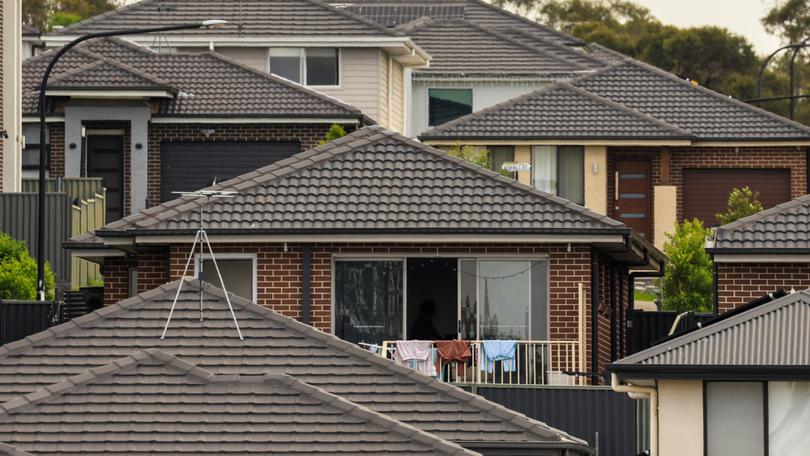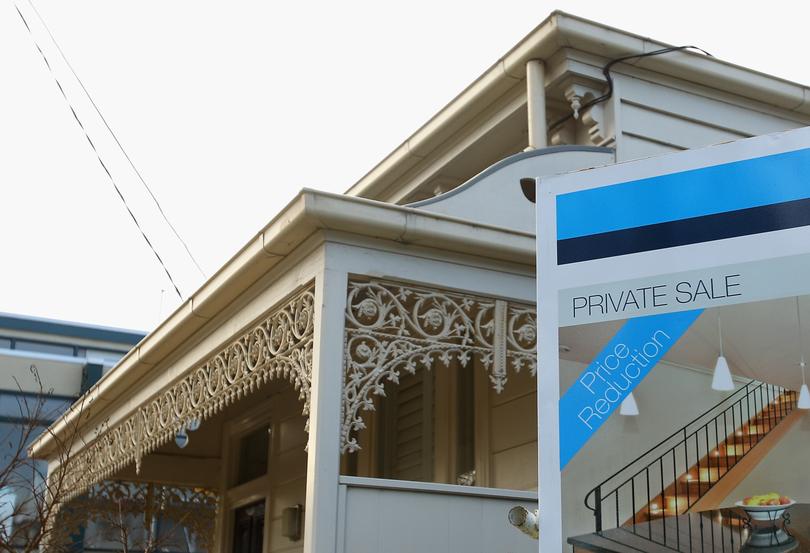Australian property prices hit fresh record high but could fall this year due to several risk factors

Runaway property price growth is not guaranteed to continue unabated in Australia this year, with a key economist pointing to three factors that could make them fall.
Prices nationally hit another record high in April, figures on Wednesday showed, but growth is slowing in Sydney and prices fell 0.1 per cent over the month in Melbourne. Growth nationally is being fuelled by a severe shortage and is particularly concentrated in Brisbane, Adelaide and Perth, which are all at record highs, the CoreLogic data shows.
Though the solid jobs market — with the unemployment rate still below 4 per cent — and the housing shortage are supporting property’s resilience, AMP chief economist Shane Oliver said there were key risks ahead.
Sign up to The Nightly's newsletters.
Get the first look at the digital newspaper, curated daily stories and breaking headlines delivered to your inbox.
By continuing you agree to our Terms and Privacy Policy.He expects property prices to rise about 5 per cent this year, but delays to interest rate cuts by the Reserve Bank (now widely expected in November at the earliest) and the prospect of higher unemployment and the possibility of another rate hike are key downside risks.
Though median property prices are now higher, Dr Oliver’s analysis suggests the capacity of borrowers has shrunk almost 30 per cent in two years — potentially pushing prices lower.
“For decades property prices were supported by ever-lower interest rates, but due to the rebound in interest rates from May 2022 and high home price-to-income ratios, there is now a wide divergence between buyers’ capacity to pay for a property and current home prices,” he said on Wednesday.
The cash rate set by the RBA was at or below 2 per cent from mid-2015 until mid-2022 as the bank embarked on its toughest increases in a generation to stamp out the highest inflation rate in just over 30 years. Rates are now 4.35 per cent, a 12-year high.
Dr Oliver said that without interest rate cuts, the capacity for an average full-time salaried borrower with a 20 per cent deposit, and the ability to make mortgage repayments at 28 per cent of income, to pay being down so significantly continued to “point to a high risk of lower property prices ahead”.
Dr Oliver also pointed to cooling clearance rates in auction-heavy markets of Sydney and Melbourne and nationally subdued housing finance data as emerging signs of cooling activity.
The housing supply shortage, which is also fuelling property purchase prices, is also keeping rents at high levels. CoreLogic reported rents up 0.8 per cent in April, a little less than the one per cent in March.

House prices are still highest in Sydney, now at $1,421,413, while Melbourne’s slipped to $941,698. Brisbane jumped 0.8 per cent to $920,046, while Perth is tipped to soon overtake Adelaide, at $800,648 versus $753,947. Prices were up marginally in Hobart and Canberra, by 0.2 per cent and 0.1 per cent over the month, respectively.
Unit price growth was strongest in Perth, Adelaide and Brisbane (1.9 per cent, 1.7 per cent and 1.6 per cent, respectively) while Sydney was up 0.6 per cent to a median of $844,659 and Melbourne by 0.1 per cent to $613,023.
“Home price gains are likely to remain widely divergent though with continued strength likely in Perth, Brisbane and Adelaide, partly helped by better affordability and interstate migration but softness in other cities, particularly Melbourne,” Dr Oliver said.
But eventual rate cuts are likely to push the market higher, suggesting any respite on prices may only be temporary — and may not be material.
